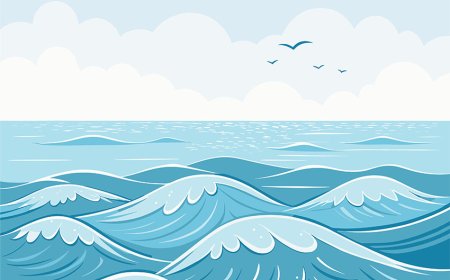Continental Drift Explained for Students Earth’s Moving Continents
Learn about continental drift, Alfred Wegener’s theory that continents move across Earth’s surface. Includes fun facts, vocabulary, and a student quiz
🌟 Introduction
Have you ever noticed that the shapes of continents look like puzzle pieces that could fit together? Over 100 years ago, a German scientist named Alfred Wegener thought the same thing. In 1912, he proposed the bold idea of continental drift-the theory that Earth's continents slowly move across its surface. Wegener suggested that all the continents were once joined together in one giant landmass called Pangaea, which later broke apart. Although his idea was rejected at first because he couldn't explain how continents moved, later discoveries such as seafloor spreading and plate tectonics proved he was right. Continental drift is now seen as the first step toward our modern understanding of Earth science.
🔍 What is Continental Drift?
Continental Drift is the theory that Earth's continents are not fixed but move slowly over time. Wegener believed:
-
All continents were once joined together in a supercontinent called Pangaea.
-
Fossils, rock formations, and mountain ranges on different continents provided evidence of this connection.
-
The continents gradually drifted to their present locations.
🌍 Why is Continental Drift Important?
-
Explains Earth's History: It shows how continents and oceans formed over millions of years.
-
Fossil Evidence: Similar fossils on different continents prove they were once connected.
-
Supports Plate Tectonics: Continental drift paved the way for the modern theory of plate tectonics.
-
Scientific Breakthrough: Wegener's idea changed geology, even though it was not accepted until after his death.
🧪 Everyday Examples
-
Fossils of the same plant, Glossopteris, are found in Africa, South America, India, and Antarctica.
-
Matching reptile fossils like Mesosaurus appear in both South America and Africa.
-
The Appalachian Mountains in North America line up with mountain ranges in Europe and Africa.
-
The coastlines of South America and Africa fit together like puzzle pieces, supporting Wegener's idea.
✨ Fun Facts
-
Wegener was a meteorologist, not a geologist, yet he changed Earth science forever.
-
Continental drift explains why coal, formed in warm climates, is found in Antarctica.
-
The term "Pangaea" means "all Earth" in Greek.
-
It took nearly 50 years after Wegener's proposal for his theory to be widely accepted.
📌 Key Takeaways
-
Continental drift is the theory that continents move across Earth's surface.
-
Alfred Wegener proposed it in 1912.
-
Evidence includes fossils, rocks, and the shapes of continents.
-
The theory was later confirmed by plate tectonics.
🐾 Kid-Friendly Summary
Continental drift means continents move slowly over time. Alfred Wegener said they were once joined as Pangaea. People didn't believe him at first, but he was right!
📚 Vocabulary Words
-
Continental Drift: The theory that continents move across Earth's surface.
-
Pangaea: A supercontinent that existed millions of years ago.
-
Fossil Evidence: Plant and animal remains used as proof of drift.
-
Plate Tectonics: Modern theory explaining how plates move.
-
Seafloor Spreading: Process that creates new ocean crust, proving drift.
-
Lithosphere: Earth's outer shell of rock.
-
Asthenosphere: The softer layer beneath the lithosphere.
-
Glossopteris: An ancient plant fossil found on multiple continents.
-
Mesosaurus: A small reptile fossil found in South America and Africa.
-
Mid-Atlantic Ridge: Underwater mountain range that supports continental drift.
🧠 Interactive Quiz on Continental Drift
- Who proposed the theory of continental drift?
A. Albert Einstein
B. Alfred Wegener
C. Charles Darwin
D. Galileo Galilei - Pangaea means
A. All Earth
B. All Oceans
C. All Fossils
D. All Mountains - What evidence supports continental drift?
A. Fossils and rocks found on different continents
B. Internet maps
C. Satellites in space
D. Human migration - Why was Wegener’s idea rejected at first?
A. He had no fossils
B. He couldn’t explain how continents moved
C. He thought Earth was flat
D. He had no maps - Which two continents fit together like puzzle pieces?
A. Asia and Europe
B. South America and Africa
C. North America and Australia
D. Antarctica and Greenland



















































